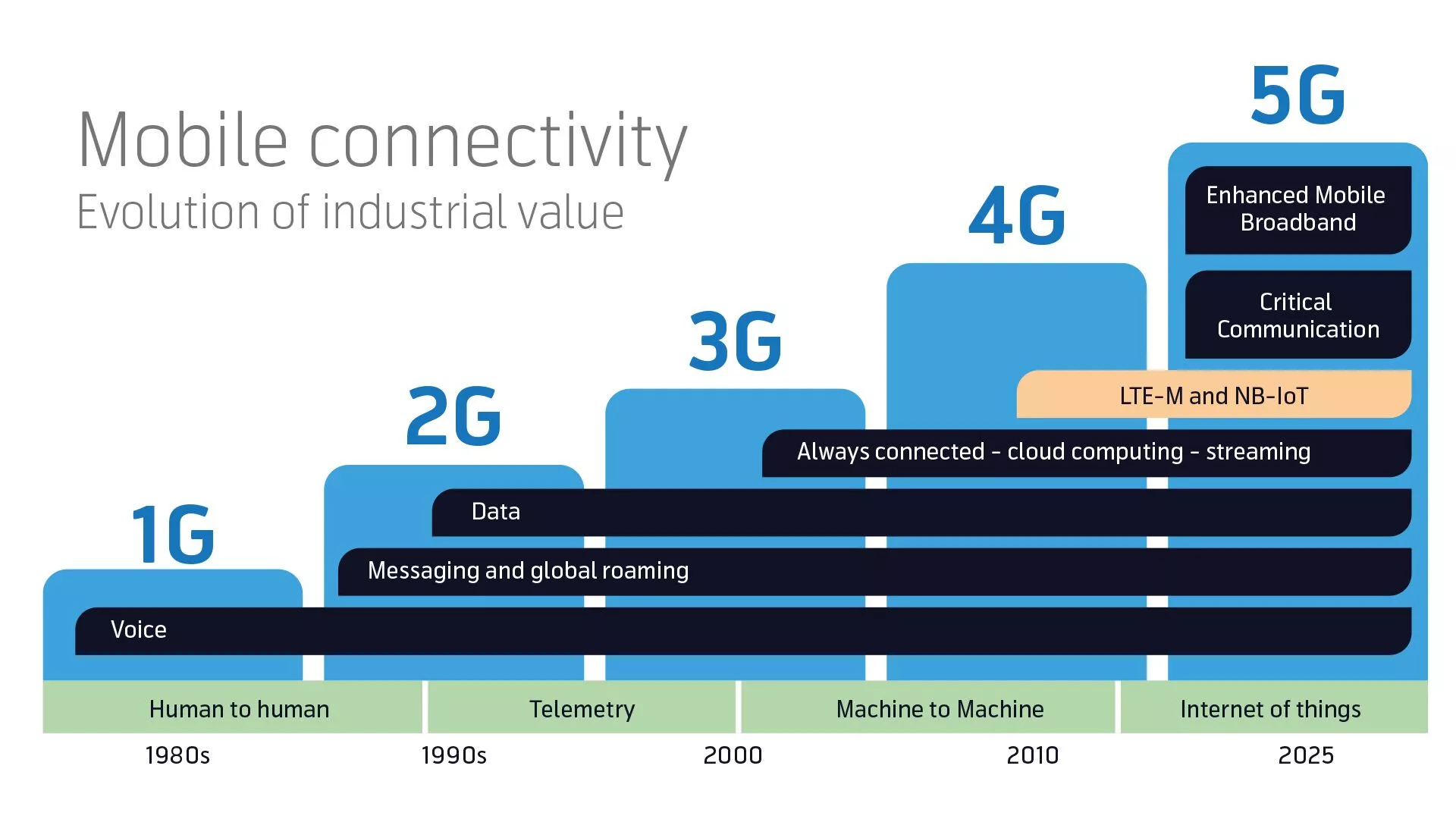NB-IoT vs LTE-M CAT-M1 Telco Cellular Network
NB-IoT and LTE-M (also known as CTA-M1) are two of the most popular IoT connectivity options in addition to the LoRaWAN. Understanding the Applications and the difference for these two telco provided networks is important to find the right technology to support specific Applications.
Cat-M1/ LTE Cat-M
LTE-M (LTE Cat-M or Cat-M1) is a new mobile data standard for the growing LPWAN or Low-Power Wide-Area Network market. It works best for transferring low to medium data in a long range.
Cat-M1 offers fast enough bandwidth to replace many current 2G and 3G IoT applications. It is different than NB-IoT in several other ways: Cat-M1 supports cellular tower handoffs, so it works with mobile applications, such as asset tracking and fleet management. It also supports voice features in IoT applications, such as medical alert devices and home alarm systems, where the ability of people to talk is important.
The standard, which uses 1.4 MHz of bandwidth, also has enough throughput to transfer firmware, software, and other security updates to IoT devices, including a full-blown Linux operating system – something NB-IoT can’t do. Furthermore, Cat-M1 supports full and half-duplexing, meaning companies can lower power consumption and increase their battery life by choosing half-duplex. It’s faster with 1Mbps upload and download speeds and lower latency of 10 to 15 milliseconds.
Cat M1 Applications
The most common Applications for Cat-M1 include wearables, such as fitness bands and smartwatches and automated teller machines (ATMs), in addition to asset tracking, health monitors, and alarms. It is also widely used in metering applications, security monitoring, building monitoring systems, and telematics.
It also has some crossover with NB-IoT and can work with smart meters and industrial monitors.
NB IoT (LTE Cat-NB1)
NB-IoT (Narrowband IoT or NB1) is another new mobile data standard for the growing LPWAN or Low-Power Wide-Area Network market. NB-IoT features uplink speeds of 66kbps and download speeds of 26kbps in half-duplex mode, meaning data goes in one direction at a time. It also has a latency of 1.6 to 10 seconds.
It operates in a very narrow bandwidth – 180 kHz – and can be deployed in the guard band portion of an LTE network, which is in-between channels in an unused portion of the spectrum. Therefore, it excels for IoT projects with a vast coverage area, delivering impressive seven times the range of current technologies like CAT M1. NB-IoT offers better building and obstacle protection.
NB-IoT relies on simple waveforms for connectivity, which consumes very little power compared to LTE Cat M1. Thus, the NB-IoT device can offer better building and obstacle penetration. This also means that NB-IoT devices cannot send as much data as LTE Cat M1.
For an NB-IoT device, when changing towers - small increases in transmission delay were observed, but the device retained its connection to the server. It is a common misconception with NB-IoT that devices need to re-establish their connection to the server every time they swap cells, resulting in transmission delays of up to one minute.
NB-IoT Applications
Most common Applications for NB-IoT include smart gas, water, and electricity meters, smart city applications, such as smart street lighting and parking sensors, and other remote sensing applications that don’t send frequent or large amounts of data. That includes HVAC control, industrial monitors, and agricultural sensors that monitor irrigation systems and detect leaks.
Based on the comparison above, the major differences between NB-IoT and LTE-M can be briefed as follows:
| NB-IoT | LTE-M | |
| Peak Data Rate | <100 kbps | >384 kbps, up to 1 Mbps |
| Latency | 1.5-10 s | 50-100 ms |
| Bandwidth | <200KHz | 1.4 MHz |
| Power Consumption | Best at very low data rates | Best at medium to high data rates |
| Mobility | limited but doable without issue | Yes |
| Support for Voice (VoLTE) | No | Yes |
| Antennas | 1 | 1 |
Applications Summary
| Application | NB-IoT | LTE-M |
| Smart Cities | Static applications with low bandwidth requirements such as smart parking, noise, pollution monitoring, waste management, and smart traffic monitoring. | Applications with heavy downlink requirements and/or voice support such as street lighting, traffic management, panic buttons, and SOS stations with optional voice support. |
| Smart Agriculture | Stationary applications with low bandwidth requirements such as weather stations, soil moisture/temperature, and humidity levels, and other environmental applications. | Applications with heavy downlink requirements and/or mobility such as smart irrigation, HVAC control in animal housing, and live animal tracking. |
| Logistics & Transportation | Semi-stationary assets such as commercial refrigeration equipment (ice cream, beverages, etc.) and on-site logistics equipment (racks, trolleys, lifts, and other warehouse machinery). | Personal tracking applications (cars, bikes, pets, children), fleet monitoring (especially trucks), and non-stationary assets such as logistics equipment (cargo, crates, pallets, etc.). |
| Industrial & Manufacturing | Stationary machinery with low data rates for process variables indirectly affecting production or quality, industrial assets tracking, and energy monitoring. | Machinery with higher bandwidth requirements for process variables directly affecting production or quality, IoT gateways linked to PLCs for tags monitoring, and worker monitoring |
Cat-M vs NB-IoT: The similarities
First off, let’s consider the similarities of the two standards. Both NB-IoT and Cat-M have power-saving mode (PSM) which means that when the device is not active, it can go into a sort of hibernation, saving on the battery life. This is great for IoT, because unlike mobile phones there is no need to be always awake in case an incoming connection is being made. IoT devices often need to connect at a predictable time of day, for example to send information on rainfall, location, or speed – and the rest of the time they can remain dormant. Usually, PSM works by sending a tracking update when the device moves or when an action is taken, and at set intervals between those times. For example, smart meters can remain in PSM until someone wants to check usage manually, and outside of periodic data reports being sent to the enterprise. This can extend the battery life of IoT devices by years.
The other similarity is the ability of these standards to use extended discontinuous reception (eDRX) in order to receive messages from the operator or enterprise, like OTA updates, configuration changes, or for troubleshooting. While for mobile subscribers, the period to check for any incoming messages was 2.56 seconds, for NB-IoT and Cat-M this can now be as much as 40 minutes. As LPWAN standards, they both support wider network coverage per each base station.
Cat-M vs NB-IoT: The differences
There are some practical differences to be aware of when you’re deciding which connectivity technology is the best fit for your IoT roadmap. Firstly, the bandwidth. NB-IoT is best for very low data rate applications, especially where the radio conditions might be challenging. It can support narrow bandwidth of 200 kHz, and the data rate therefore has a ceiling at about 250Kbps. In contrast, Cat-M can achieve higher data rates of up to 1 Mbps because it uses 1.4 MHz bandwidth. This can also come at a higher cost than NB-IoT, so it’s really all about considering what you need. As Cat-M has a wider bandwidth, you can achieve lower latency and greater accuracy with where your devices are positioned. There are also benefits in terms of functionality, such as the ability for Cat-M to support voice calls and mobility. Of course – this is only a benefit if you need it, otherwise it becomes added bells and whistles at greater cost.


